Features - News Feature
OCTOBER 6, 2000
The Indianapolis Hall of Fame
BY NICK GARTON
When Formula 1 came to the Indianapolis Motor Speedway 91 years of history was swept aside. Where once the wide open space of the paddock and Gasoline Alley epitomized the old days, the ten floor Pagoda Tower reached 199 feet into the air, flanked by 248,346 square feet of new pit garages topped off with hospitality suites to one side and a four floor media center to the other.
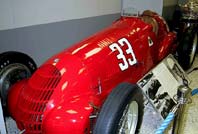 |
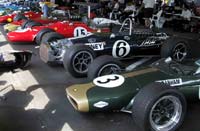 |
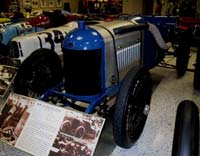 |
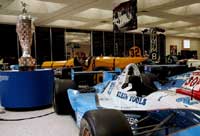 |
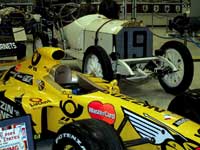 |
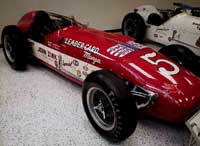 |
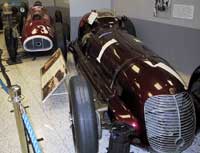 |
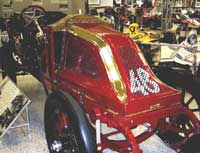 |
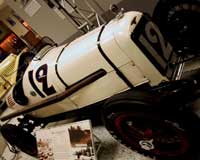 |
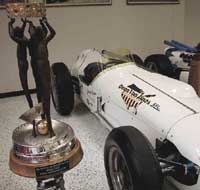 |
Anything and everything to do with the speedway's story is housed within the cool, quiet confines of the museum and one is drenched in the sense of awe in which the 500 race is held. As a first time visitor the sight of Formula 1 cars wailing through the banked final corner of their new circuit was sensational, and made a trip to the 500 an absolute necessity. Veterans of this most famous race say that it's a shadow of its former self since the IRL took over, and speak with deference about their earliest memories.
'The drivers' parade was really quite terrifying,' said legendary Formula 1 scribe Nigel Roebuck. 'They would wave solemnly and look out at familiar faces in the crowd as though they would never see them again. The whole ceremony of the prayer, the silence, the national anthem with the crowds piled high in the stands all around was just like the gladiators saying "salute us, we have come to die". Then it was time for "gentlemen, start your engines" and the atmosphere grew wild.'
Somewhere in the region of 80 drivers have perished since the inception of the 500, and the human cost of this grand old tradition is strongly reflected in the Hall of Fame. There are no gory photographs or charred pieces of metal on display, but the music that plays through the display halls is soft and reflective as the human cost of endeavor and the manner in which the race winners are sculpted, sketched and preserved to be lionized reminds you that this was a race where the danger was revelled in rather than respected as in Grands Prix.
There are legends everywhere in the building. One display case is devoted to Eddie Rickenbacker, the young driver who raced in the 500 from its earliest days before becoming America's ace of aces in the skies over the Western Front. When Rickenbacker returned to Indy it was in 1927 as the proprietor, and mementoes of his 18 year reign fill the cabinet.
The two biggest cases are filled not with the trophies won at Indianapolis but the entire collection of Rudolf Caracciola, who attempted to race the 500 in 1946, some 20 years after he shot to fame in Grand Prix cars. After losing control in qualifying Caracciola spent many months recovering from head injuries and it's rumored that his wife Baby had an affair with the speedway's owner, Tony Hulman. For whatever reason the grandest collection of pre-war Grand Prix trophies in the world now reside at Indy, presented to Hulman by Baby, and make a stirring sight - although young Americans tend to recoil from the Aryan sculptures presented by the Nazi government for Caracciola's many victories at the Avusrennen, Eifelrennen, German Grand Prix and mountain championships.
Elsewhere every aspect of life at Indy is covered, including a display of literally hundreds of race credentials and passes from the earliest timekeeper's armband of 1916 to the wackiest Brickyard 400 photopass for Superchicken the mascot but, of course, the cars are the stars - and the depth of history on display is breathtaking. At the entrance to the hall you are greeted by a 1907 Grand Prix Itala standing next to what is effectively two steel bars mounted on wheels with an engine up front: the 1903 Premier Special.
Opposite these cars is a fantastically rare Mercedes W196 streamliner as raced by Juan Manuel Fangio in 1954 and given as a personal gift to Tony Hulman by Mercedes a decade later. There is the gigantic chain-driven Mercedes with which Christian Lautenschlager won the 1908 French Grand Prix, towering above a Jordan 199 in sharp relief to the modern era. Across the way is the Boyle Special Maserati 8CTF with which Wilbur Shaw won the 500 in 1940 and the Ferrari with which Alberto Ascari failed to master America with in 1952.
More transatlantic memories are stirred by Jim Rathman's 1958 Monza-winning car from the short-live 'Race of Two Worlds', when the Americans tackled the Europeans around the banked circuit at Monza - and won. Next to Rathman's car is Jimmy Bryan's 1957 roadster, and between them the massive trophy. In separate halls you will find Parnelli Jones' race-winning roadster from 1963 and the car that chased it home - Jim Clark's Lotus, the performance of which heralded the end of the roadster era.
Of all the cars on display however, the most captivating of all must be Jimmy Murphy's white Duesenberg, the car which won the 1921 French Grand Prix and followed it up with victory at Indy the following year. Murphy died in a dirt track race but his famous Duesie survived, albeit to be found by his riding mechanic Ernie Olsen some 30 years later, rotting away in a Hollywood backlot. Now lovingly restored to its Grand Prix-winning state, it takes pride of place in the Hall of Fame as quite possibly the most charismatic American racing car of all.
For any of the old guard of Indianapolis with whom the speedway's new look might rankle, I would suggest that they spend a few quiet minutes appreciating the legacy of Jimmy Murphy, Rudi Caracciola, Jim Clark and co. The spirit of the past is alive and well despite the facelift.